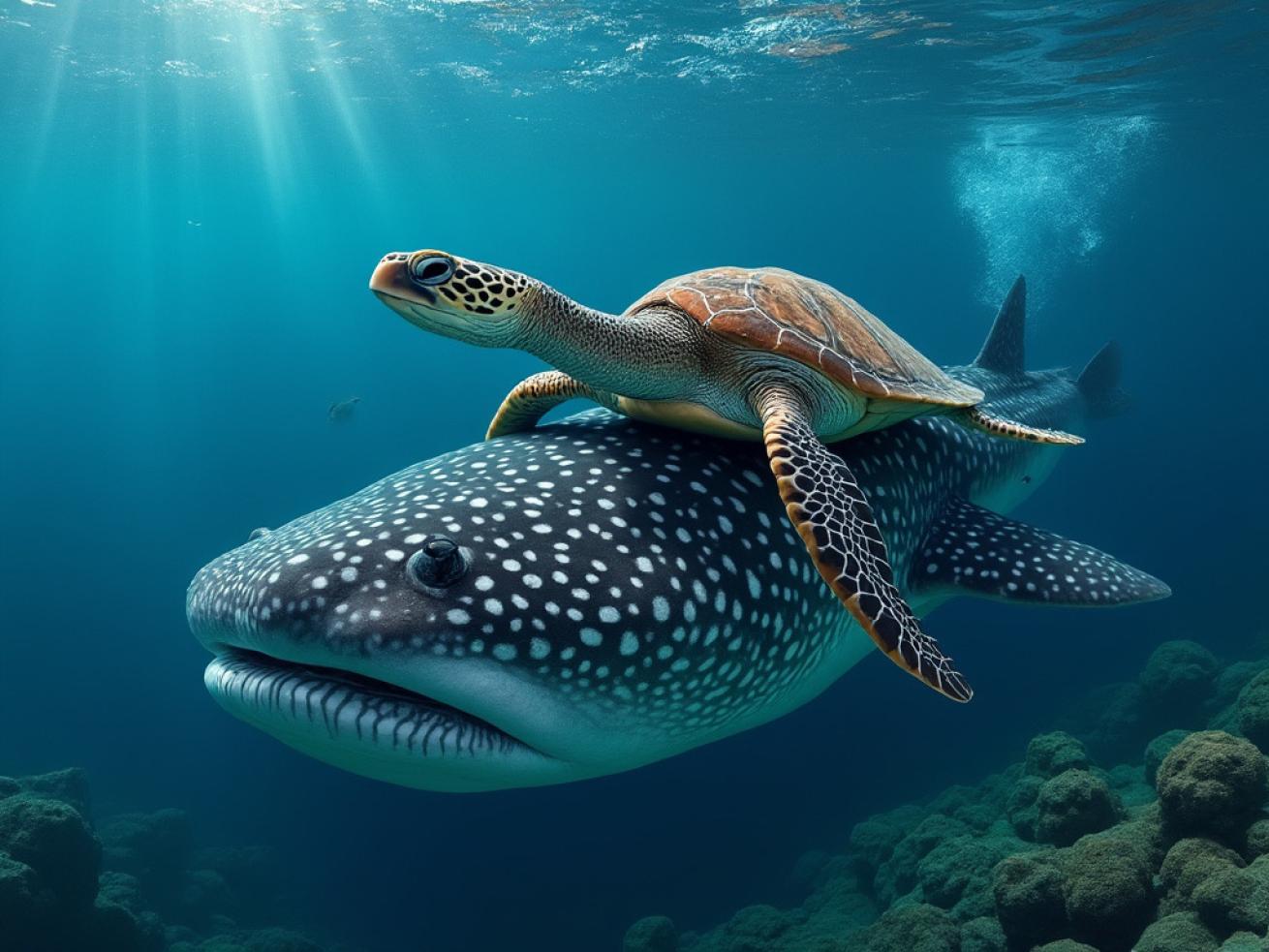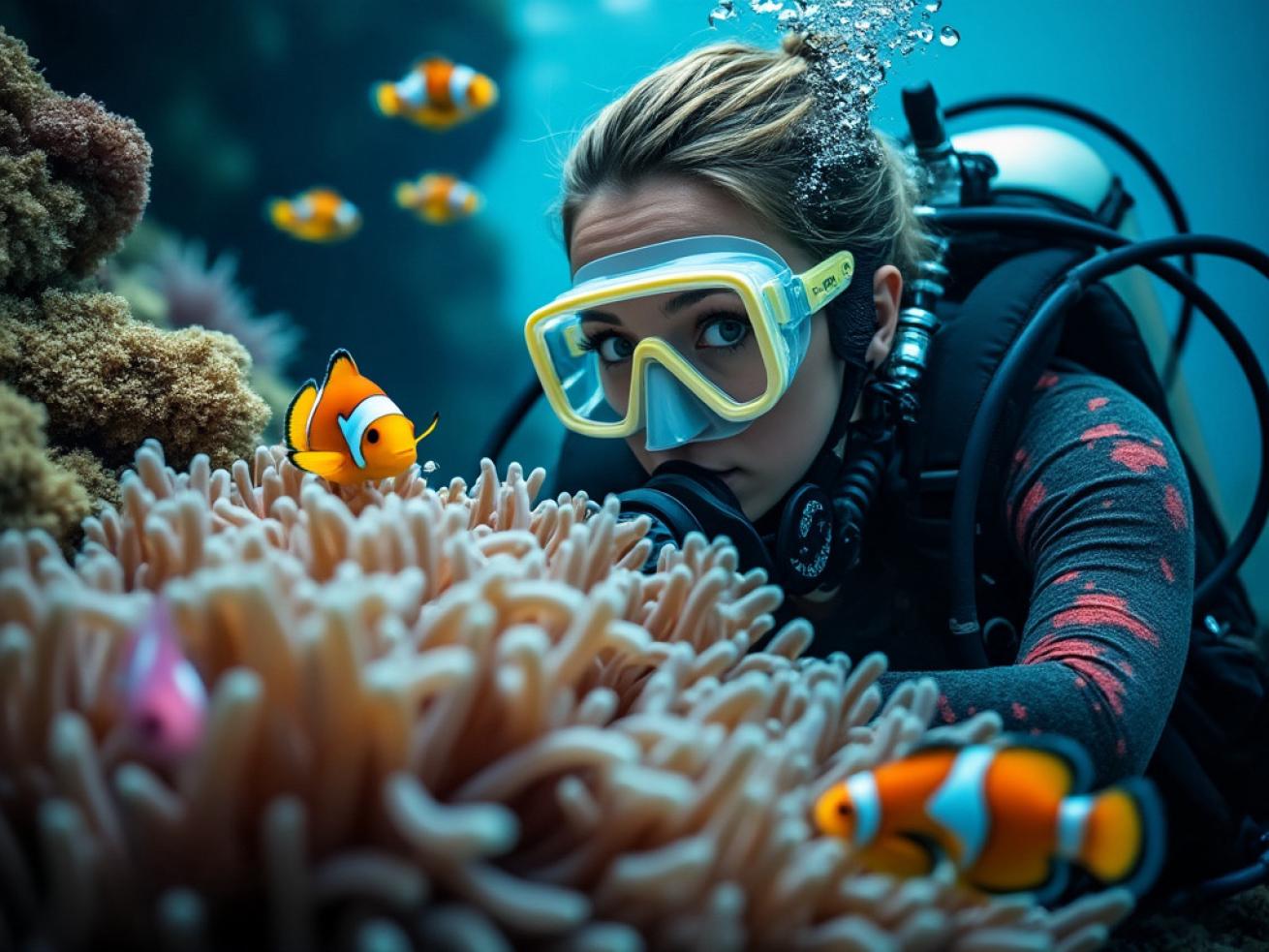AI: Is It Good or Bad for Scuba Diving?
I previously wrote about how artificial intelligence (AI) can be a plus for us scuba divers. It’s a game-changing technology that can allow us to identify a marine critter or coral species while we are still underwater, rather than waiting until we are back onboard the boat, trying to remember exactly what it looked like, and then searching to correctly ID it.
Now we are faced with AI image and video creations that will become harder and harder to distinguish from the real deal. It is quickly becoming easier and easier for users to type a short command and then the AI image generator uses machine learning models to create an image based on your text description. Take for example the image shown here of a turtle riding a whale shark. That is exactly the simple command I asked the AI engine to create. Five seconds later, bam! — the image was produced. The free AI engines available to us are still in their rudimentary stages, so realism is not quite there—yet.
Related Reading: Artificial Intelligence in Scuba Diving?

Created using AI by Wayne BrownArtificial intelligence now has the power to generate any image you can imagine, turning your ideas into visuals with just a few prompts.
The close-up photo I created of a female diver looking at an anemone with its resident clownfish took a couple of tries before it generated exactly what I was looking for in my mind’s eye, but still, it is crazy how easily this can be done. You can see the regulator is not situated realistically in her mouth, so generating scuba diving photos will be harder for AI image generators to produce than a common, everyday topside image. For example, the image I worked on of a scuba diver in a dark-blue, full wetsuit hovering over a volcanic bottom viewing a passing eagle ray—such as what we encounter on the Galapagos Aggressor III—took me a little while to create. The resulting image was indeed of a scuba diver in a dark-blue wetsuit, but without fins or a TANK!

Created using AI by Wayne BrownWhile AI can now create any image you envision, the results may not always be realistic and can convey the wrong message.
I have high hopes that no respectable scuba diving company will ever use AI to create images and videos that are passed off as real to their customers. This would be a huge disservice to the scuba diving community. We have so many amazing real-life encounters that we can capture with our cameras that there is no need to be deceptive about or falsely create something that was not created authentically, in a real-world encounter.
The ability for this evolving technology to be a helpful tool for learning and discovery for us scuba divers will be a welcome advancement. The list is endless for positive uses of this technology. Feeding underwater encounter data into an AI supercomputer and finding patterns that help with fulfilling a scuba diver’s bucket list will be a huge return on investment for their hard-earned vacation dollars. For example, knowing what season and time of day offers the best opportunity for encountering a whale shark, oceanic manta ray or other marine creature a diver wants to check off their life list will be one of the benefits of this evolution.
Ultimately, whether AI is good or bad for scuba diving depends on how it is used and integrated into our sport, community and industry. Balancing AI’s capabilities with ethical standards will be key to ensuring that AI is used appropriately. For now, let’s all agree that we are living in some amazing times for computer science and the advances AI can make in people’s lives will be remarkable!

Wayne Brown
CEO Aggressor Adventures
PADI Instructor 174820










